Klim Voroshilov: a car for war
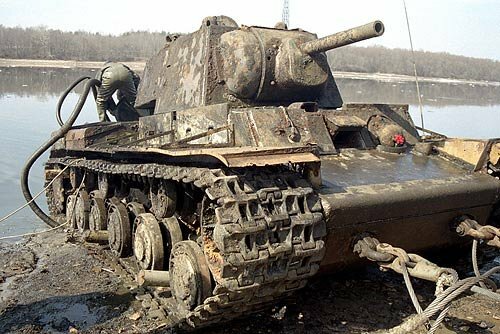
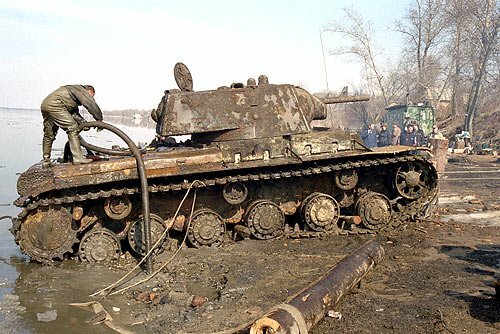
Heavy tank KV-1А, raised from the bottom of the Neva in spring 2003 of the year
In accordance with the decision of the USSR Defense Committee at the end of 1938 in SKB-2 of the Kirov plant in Leningrad (chief designer J. Ya. Kotin), the design of a new heavy tank with protivosnaryadnym reservation, called QMS (Sergey Mironovich Kirov). The development of another heavy tank, called the T-100, was engaged in the Leningrad Experimental Engineering Plant named after Kirov (factory number 185). In parallel with the QMS, a design for a single-tower KV heavy tank was developed.
The leading designer of the SMK tank was A.S. Ermolaev. The initial project envisaged the creation of a three-towed machine with a mass of 55 tons. In the process, one tower was abandoned, and the saved weight was sent to armor thickening. In parallel with the QMS group of graduates of the Military Academy of Mechanization and Motorization. Stalin, who had practice at the Kirov Plant, under the leadership of L.Ye. Sychev and A.S. Yermolaev, a project of a single-mounted heavy KV tank (Klim Voroshilov) was developed. As a matter of fact, the KV was a reduced-length, two QM road wheels with one turret and a diesel engine. At the final stage of the design of a one-tower tank, N. L. Dukhov was appointed the lead designer of the project.
In August 1939, the KV tank was manufactured in metal, and at the end of September participated in the demonstration of new models of armored vehicles at the NIBT range in Kubinka. In October, began factory tests. In November, the first prototype of the tank was sent to the front on the Karelian Isthmus to participate in hostilities against the Finns. 19 December 1939, the KV tank was adopted by the Red Army.
Serial production of KV tanks with 76-mm cannons (“tanks with a small turret”) and quickly developed from the experience of fighting on the Mannerheim line KV tanks with 152-mm howitzers (“tanks with a big turret”) began in February 1940, at the Leningrad Kirov factory (LKZ). Until the end of the year, the Kirov Plant was able to manufacture an 243 tank (139 KV-1 and 104 KV-2), fully following the plan above. In accordance with the resolution of the Council of People's Commissars of the USSR and the Central Committee of the CPSU (b) of 19 June 1940, the Chelyabinsk Tractor Plant (CTZ) had to be connected to the KV output. December 31 1940, the pilot assembly of the first UF UF was made. At the same time, the construction of a special building for the assembly of heavy tanks began in Chelyabinsk.
This tank KV-2 was stopped only by hitting the left caterpillar
The production plan for 1941 year included the release of 1200 KV tanks. Of these, at the Kirov factory - 1000, at CTZ - 200. However, the war made adjustments to this plan. By the beginning of the war in Chelyabinsk, the entire 25 KV-1 was manufactured, and the production of the KV-2 was never mastered. In total, in the first half of 1941, the 393 of the KV tank was manufactured.
The hull of the KV-1 was welded from rolled armor plates, the maximum thickness of which reached 75 mm. The tower was made in two versions - welded and cast. The maximum thickness of armor welded towers reached 75 mm, cast - 95 mm. In 1941, the armor thickness of the welded towers was brought to 105 mm by installing 25-mm screens, which were fastened with bolts.
On the tanks of the first issues, the X-NUMX-mm L-76 gun was installed, then the F-11 of the same caliber, and from the end of October 32, the 1941-mm ZIS-76 gun. In addition, the tank was armed with three machine guns - paired, course and aft. On the part of the machines was installed and anti-aircraft machine gun DT. The ammunition consisted of 5 cannon shots and 135 cartridges for machine guns.
12-cylinder V-shaped diesel V-2K with power 600 l. with. allowed the 47,5-ton war machine to reach 34 km / h. Cruising on the highway was 250 km. The crew consisted of five people.
The main difference of the KV-2 tank was the installation of a new large tower. The overall height of the machine has reached 3240 mm. The 152-mm M-10 tank howitzer of the 1938-1940 sample of the 36 model and the DT machine gun paired with it were installed in the turret, in a mask, covered with an outside armor cover. There was a door in the stern of the tower, next to which another DT was located in the ball bearing. The tank also has a course machine gun in the front hull sheet. The ammunition consisted of separate charging 3087 shots and 1 cartridges. The power plant, power transmission, running gear, electrical and radio equipment remained the same as on the KV-2. Tank KV-1 was released in limited quantities, and after the start of World War II from 1941 in July XNUMX, its production was stopped.
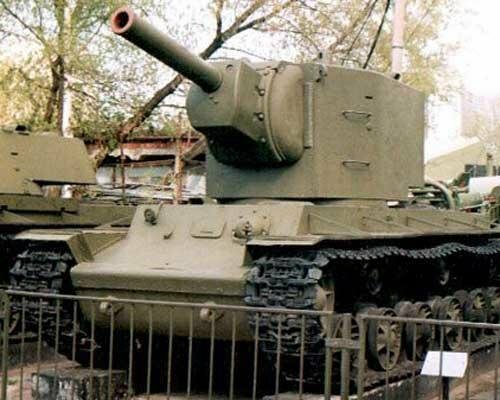
KB-1
As of 1 June 1941, the troops had an 504 KV tank. Of this amount, most were in the Kiev Special Military District - 278 machines. The Western Special Military District had 116 KV tanks, the Baltic Special One - 59, Odessa - 10. In the Leningrad Military District there were 6 tanks KV, in Moscow - 4, in the Volga region - 19, in Orlovsky - 8, in Kharkov - 4. Of this amount, 75 KV-1 and 9 KV-2 were in operation. From 1 to 21, another 41 KV tank was sent to the troops from the factory in June.
Crew training for new heavy tanks was often carried out (if at all) on all types of tanks. For example, 3 December 1940 was ordered by the directive of the Chief of the General Staff of the Red Army No. 5 / 4 / 370 "to train personnel and save the material part of combat vehicles to be released, exclusively as training, to each battalion of heavy tanks X-NUMX T-10 tank tanks." It remains a mystery how T-27 could learn to drive and maintain the KV-27 or KV-1. As a result, by June 2, the number of trained crews for these machines did not exceed 1941.
In the first days of the Great Patriotic War, both the obvious merits and shortcomings of the new heavy tanks, as well as all the shortcomings in the combat training and organizational structure of the Red Army tank forces, were fully manifested. For example, in the report on the military actions of the 8 th mechanized corps from 22 to 26 in June 1941 (by the beginning of the war, the corps had 71 KB, 49 T-35, 100 BT, 34 T-277, T-344, 26 BT, 17 T-27, 34 T-3) reported the following: “The drivers of the KB and T-5 combat vehicles mostly had practical driving experience from XNUMX to XNUMX hours. For the entire period of the corps' existence, the combat materiel and personnel completely did not withdraw to tactical exercises and were not practically tested both on the issues of the march training and on the actions in the main types of combat. Tactical knockoffs were carried out no higher than the scale of a company, a battalion and partly a regiment. "
From the report of the commander of the 41 Tank Division of the 22 of the 25 Mechanized Corps of July 1941 of the division’s combat operations (by the beginning of the war there were 312 T-26 and 31 KV-2 tanks) that to 152-mm KV-X guns 2 did not have a single projectile.
According to the memoirs of D. Osadchiy, commander of the company of tanks KV-1 during the 2-th tank division, “23-24 of June, before entering the battle, many KB tanks, especially KV-2, failed during the marches. Very big problems were with the gearbox and air filters. June was hot, there was a huge amount of dust on the roads of the Baltic States and the filters had to be changed after an hour and a half of engine operation. Before entering the battle, the tanks of my company managed to replace them, but in the neighboring ones they did not. As a result, by the middle of the day most of the cars in these companies broke down. ”
Well trained crews worked wonders on the KV tanks. 18 August 1941, the five tanks KV-1 company of Lieutenant Z. G. Kolobanov took up defense on the outskirts of the city Krasnogvardeysk (Gatchina). By evening, the tanks were covered by towers in caponier. For his KV Kolobanov chose a position in the most threatened area - the northern outskirts of Krasnogvardeisk. The units of the 1 German Tank Division that were attacking here could hit the rear of the Soviet troops who were defending the borders of the Krasnogvardeisky fortified area, and then, coming along the old Gatchina parks to the Kiev highway, it was almost unhindered to advance towards Leningrad.
In the morning of August 19, on the left flank, one of the company’s tanks engaged the enemy. In the second hour of the day, German tanks appeared in front of Kolobanov’s position. 22 enemy vehicles were walking along the road in a column at reduced distances, substituting their left sides almost strictly at right angles to the HF gun. The hatches were open, many Germans sat on their armor. Our tank crews even distinguished their faces, since the distance to the enemy column was small - only about 150 m. When the reference point No. 1 (two birch trees at the crossroads), scheduled by tankers the day before, was several meters away, Kolobanov ordered the gun commander to senior sergeant Usov to open the fire. With a few shots, Usov set fire to two enemy tanks and two end tanks. The column was in the bag. The maneuver for the Germans was limited to swampy terrain on both sides of the road. The enemy did not immediately determine where the fire was coming from, but then brought down a shower of shells on Kolobanov’s position. Tankers were suffocating from the powder gases, from the strikes of enemy shells on the armor of the tank were all contused. Usov, without looking up from the sight, continued to shoot tank after tank. Finally, the last 22 tank was destroyed. During the battle, which lasted more than an hour, Usov fired 98 shells at the enemy. For this battle, Lieutenant Kolobanov was awarded the Order of the Red Banner, and Senior Sergeant Usov was awarded the Order of Lenin.
In the same battle, other KV crews from the Kolobanov company also distinguished themselves. In a battle on the Luga road, the crew of Lieutenant Sergeyev knocked out 8 of German tanks, the crews of Lieutenant Lastochkin and Junior Lieutenant Degtyar - according to 4, and the crew of Junior Lieutenant Evdokimenko - 5. At the same time, Evdokimenko died in battle, three members of his crew were wounded, and the fifth tank, Sidikov, a mechanic-driver, destroyed with a ram attack. Total for 19 August 1941, the company Kolobanova disabled 43 German tank.
As for the rams, often described in various publications, in the summer of 1941, they were indeed a frequent occurrence, but sometimes not from a good life. Here is what was reported in the report of the commander of the 43 Tank Division of the 19 th mechanized corps about the battles from June 22 to 10 August 1941: “Pursuing the enemy’s infantry, our tanks were met by fire from the ambush of the enemy tanks, but (ambush) was attacked KB and T-34 tanks, which were pulled out ahead, and T-26 tanks after them ... The KB and T-34 tanks, not having enough armor-piercing shells, fired with fragmentation shells and with their mass crushed and destroyed the enemy’s tanks and anti-tank tanks guns moving from one turn to another y. "
However, despite the powerful armor, strong armament and heroism of individual crews, KB tanks did not play any significant role in the summer battles of 1941. The main part of these machines failed due to technical reasons, due to illiterate operation, lack of spare parts, means of evacuation and repair. In addition, the Germans, finding out that it was impossible to fight KB with conventional anti-tank weapons, successfully used against them 88-mm anti-aircraft guns Flak 36 and 105-mm (according to the German notation - 10-cm) corps field guns K18.
Nevertheless, in the documents of the autumn of 1941, there are reports of quite successful use of KV tanks. True, mainly in defense. For example, on November 8, the 1941 crew of the KV tank of Lieutenant A. Martynov from the 16 tank tank brigade of the Volkhov front in a battle near the village of Zhupkino (Leningrad region) repulsed an 14 attack of German tanks from the ambush, destroying five German cars. Soon, these tanks were repaired and already fought as part of the 16-th tank brigade. During this battle, Lieutenant Martynov was presented to the title of Hero of the Soviet Union. 5 December 1941, the crew of the KV-1 tank, Lieutenant Pavel Gudz of the 89-th separate tank battalion, fought 18 with German tanks, knocked out 10 of them, as well as four anti-tank guns. For this fight, Gutz was awarded the Order of Lenin. I must say that this tanker was familiar with the KV tank very well, since it began to fight there from the first days of the Great Patriotic War. His further combat fate is also associated with combat vehicles of this type.
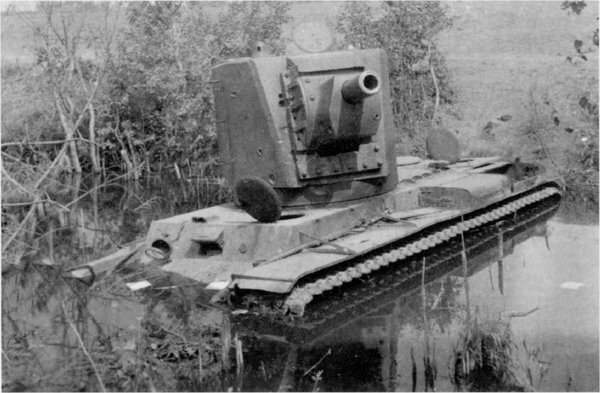
In July, 1942, Pavel Gudz, already in the rank of captain, was appointed commander of the 574 tank battalion of the 212 tank tank brigade, which was part of the Don Front. In November of the same year, Captain Hudzu was promoted to the rank of major and appointed deputy commander of the 8-th separate guards tank regiment of the breakthrough. However, he was unable to serve for a long time in this position, since he was injured as early as next month.
In one of the battles, his tank caught fire. In addition, the caterpillar flew off and the combat vehicle froze in place. And on the armor was already buzzing flames from the flared diesel fuel, threatening to get inside the car, filled with ammunition. The tank crew arrived in time and rescued the crew, and their commander with six penetrating wounds was immediately sent to the hospital. After such wounds in a combat system do not return. But the major wrote the report personally to the Supreme Commander and got his way - he was sent to the front.
The new service post of Major Gudz was the 5-th separate Guards Tank Regiment of the breakthrough, which was part of the troops of the South-Western (later 3-th Ukrainian) front, in which he accepted the position of deputy commander in May 1943. When approaching Zaporozhye, in order to ensure forcing the infantry units the crossing of the Dnieper, it was necessary to seize the hydroelectric dam. For two days there was a fierce battle. When our tanks reached the target, the Tiger suddenly jumped out of the ambush. A gun duel ensued. Suddenly, the tank in which Hudz was located shook the blow of tremendous force. Charger and gunner were killed. Gudzia had her left clavicle damaged and her left hand fractured: she was dangling on one vein. The pain clouded consciousness, and in the field of view of the sight "Tigers" blurred like rainbow spots of diesel fuel on the water. Overcoming pain, Lieutenant Colonel Gutz cut his tendon with his knife. The brush slipped out of the jumpsuit. Now all the attention "Tigers". Here is one framed board. Obediently, the descent pedal worked. From a shot, the tank started, and the enemy vehicle, engulfed in flames, froze on a sandbar. The second "Tiger" still managed to deploy its gun, and Hutz saw a black circle of its trunk. "Tiger" and KB shot at each other almost simultaneously ...
Exploded KV-2 with MT-1. In the background is another HF-2
When I woke up, I realized that it was already evening and the battle was going on in the distance, and he was lying near the tank, in a fresh crater from the aerial bomb. Squatting was a driver. Noticing that the commander had come to his senses, he happily reported: "And you, too, of the second ..."
The reader will probably immediately have a question: were there any “Tigers”? After all, after the Battle of Kursk, the attribution of almost any German tank to the “tiger” class became a mass phenomenon in the Red Army. Well, we can say firmly - there were “Tigers”! It was at this time and precisely in this place, in the area of the Dnieper Dam, that the 506 th German heavy tank battalion fought. Of course, KV, frankly, did not "pull" against the "Tiger" in a tank duel, but since the described battle was fought at a short distance, the chances were leveled. Well, such an experienced tanker, like Pavel Gudz, cost nothing to hit the Tiger from the first shot. So we can say with confidence that in this fight he really hit two “Tigers”, moreover, from a broken tank and with a torn left hand! The fact that we most likely will not find any confirmation of this in the combat magazine of the 506 of the German heavy tank battalion means that the Germans took into account only their irretrievable losses, and the tanks they killed did not appear at all in their reports.
It should be emphasized that the tank KB itself is a rather controversial vehicle. Paradoxically, but in 1941, this tank was not needed - it simply did not have a worthy opponent. But he had no clear combat advantages over the average T-34, with the exception of thicker armor. Armament was the same, and maneuverability worse than thirty-four. Tankers didn’t really like this car: KB could smash any road (wheeled vehicles could no longer follow him), almost no bridge could withstand it, with the exception of capital stone. But the main drawback is the extremely unreliable transmission, the failure of which was a mass phenomenon.
Part of the transmission deficiencies was eliminated in the KV-1942с modification that appeared in 1 (“c” - high-speed). However, in this modification, in the pursuit of maneuverability, the thickness of armor was reduced, and in terms of its combat properties, heavy KB was even closer to medium tanks.
Thus, the only justification for the release of a KB in 1941-1942 in parallel with the T-34 could be only a more powerful gun, for example 85-mm. But this was not done for the reason that at that time the 76 caliber mm gun did quite well with all of the enemy’s armored targets.
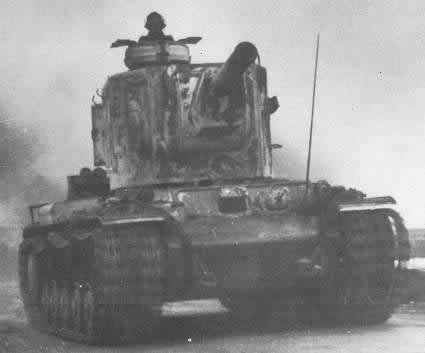
Captured by the Germans KV 2. German mechanized division on the march
A tank of a similar class KB - "Tiger" appeared among the Germans only at the end of 1942 year. And then fate played a second cruel joke with KB - it was instantly outdated. Our tank was simply powerless against the "Tiger" with its "long arm" - 88-mm cannon with a barrel length 56 caliber. "Tiger" could hit KB at distances beyond the limits of the latter. This did not slow down in combat. Thus, for example, on February 12 of 1943, during the blockade of Leningrad, three “Tigers” of the 1 of the 502 heavy tank battalion destroyed the 10 KV. In this case, the Germans had no losses.
The appearance of the KV-85 tank made it possible to smooth the situation somewhat. But these machines were mastered late, they were released a little and make a significant contribution to the fight against the German heavy tanks, they could not. A more serious opponent for the "Tigers" could become the KV-122 - the serial KV-85, armed in the experimental order with the 122-mm cannon D-25T. But at this time, the ChKZ guilds began to leave the first tanks of the IS series. The latter, which at first glance continued the KB line, were already completely new machines.
KV-85 - Soviet heavy tank during World War II. The abbreviation KV means "Klim Voroshilov" - the official name of the serial Soviet heavy tanks 1940 — 1943. 85 index means the caliber of the main armament of the machine.
From 1940 to 1943 year, 4775 KB tanks of all modifications were released. They fought on all fronts of the Great Patriotic War, first in the composition of tank brigades of mixed composition, then in the composition of individual guards tank regiments of the breakthrough. Until 1945, quite a few KBs were used, used as battle tanks. Basically, after dismantling the tower, they served as evacuation towers.
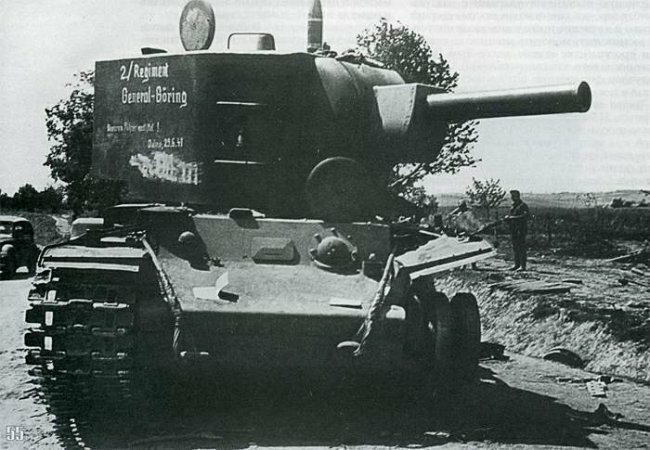
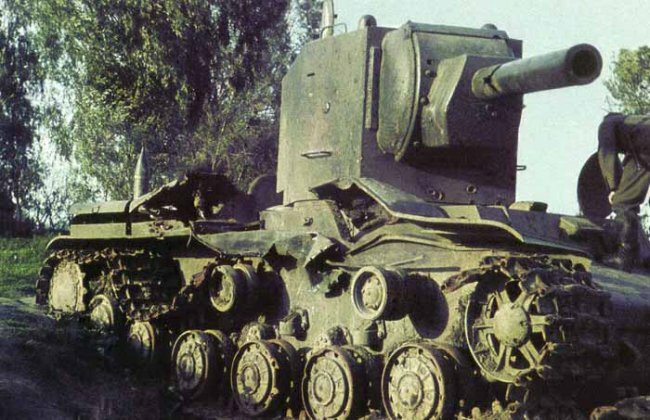
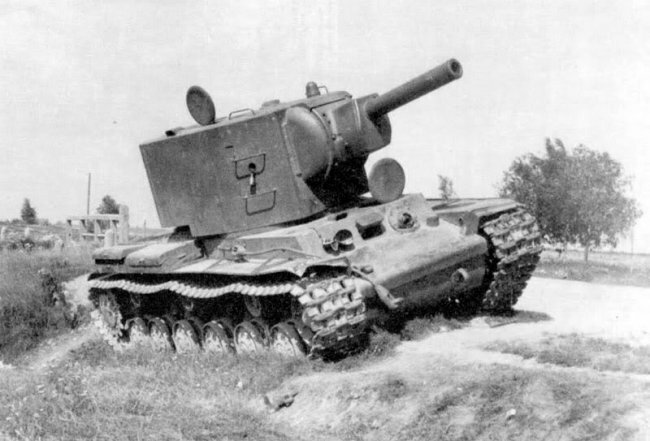
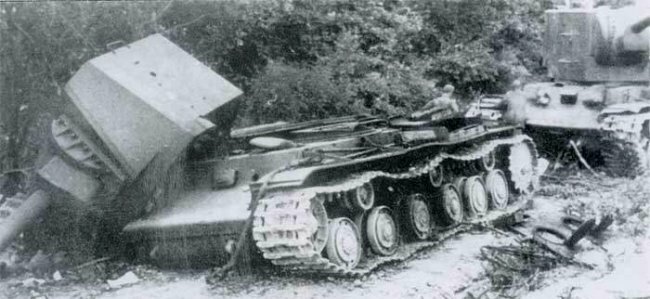
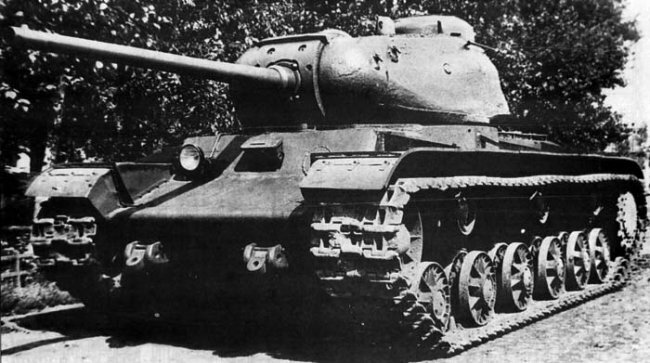
Information